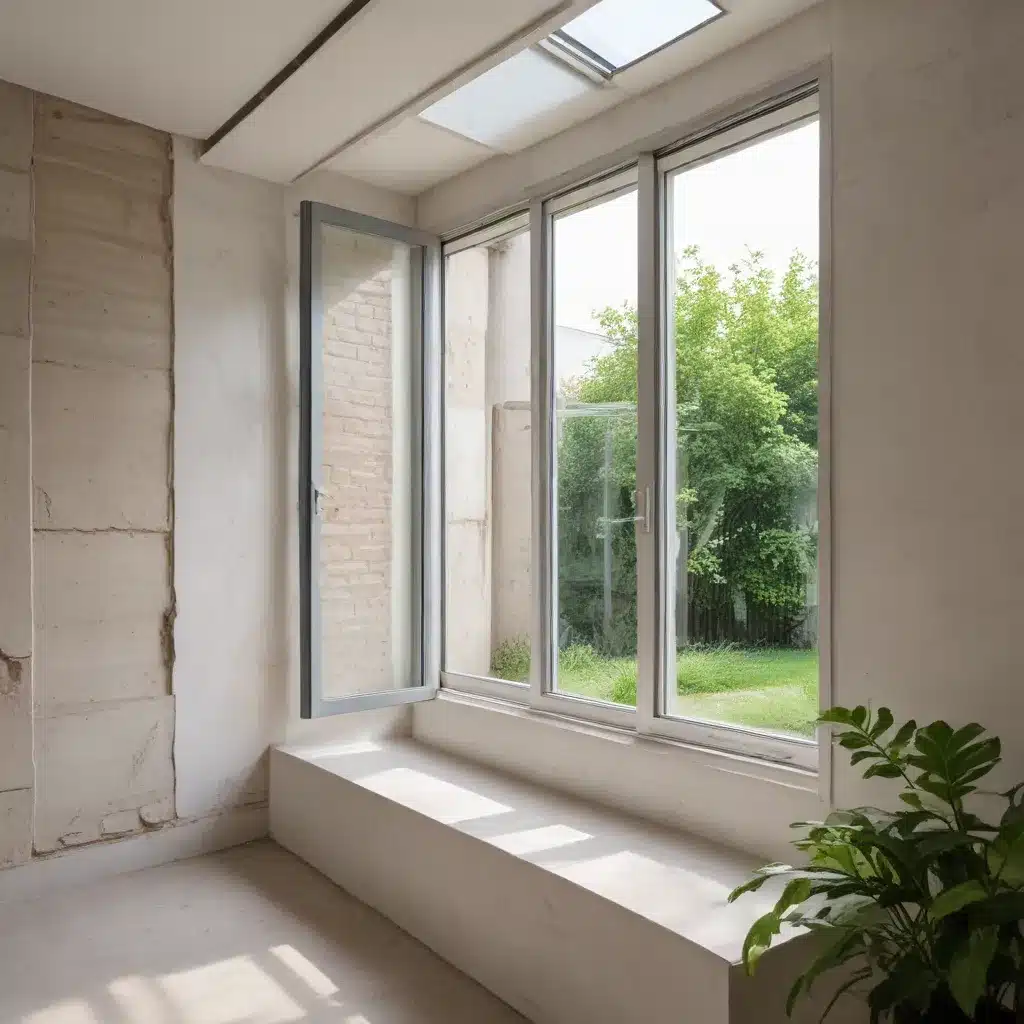
As an experienced home improvement consultant, I’m excited to share my insights on how you can transform your living space into an eco-friendly haven that harnesses the power of natural ventilation. Renovating your home with sustainability in mind not only reduces your environmental impact but also enhances your comfort and saves you money in the long run.
Improved Indoor Air Quality
The air we breathe inside our homes is often more polluted than the air outside. Traditional construction methods and the use of synthetic materials can lead to the buildup of harmful volatile organic compounds (VOCs), which can negatively impact our health. By embracing eco-friendly renovations, you can create a living environment that promotes clean, fresh air.
One of the most effective ways to improve indoor air quality is through natural ventilation. Strategically placed windows, vents, and cross-ventilation strategies can help circulate fresh air, reducing reliance on energy-intensive mechanical systems. This not only enhances the overall comfort of your home but also helps to remove pollutants, allergens, and excess humidity.
Energy Efficiency and Cost Savings
Eco-friendly renovations don’t just benefit the environment; they can also save you money on your energy bills. By incorporating passive design strategies, such as thoughtful window placement, high-performance insulation, and the integration of renewable energy sources, you can significantly reduce your home’s energy consumption.
For example, installing solar panels or geothermal heat pumps can provide clean, renewable energy to power your home, reducing your reliance on fossil fuels and cutting your utility costs. Additionally, upgrading to energy-efficient appliances and LED lighting can further contribute to your long-term savings.
Sustainability and Environmental Impact
Embracing eco-friendly renovations is not just about saving money or improving your living environment; it’s also about making a difference for the planet. By choosing sustainable building materials, reducing waste, and minimizing your carbon footprint, you can play a vital role in creating a more sustainable future.
Sustainable materials, such as bamboo, reclaimed wood, and low-VOC paints, are not only better for the environment but also add a unique character to your home. Furthermore, implementing strategies like water conservation through low-flow fixtures and rainwater harvesting can help preserve our precious natural resources.
Principles of Natural Ventilation
At the heart of eco-friendly renovations lies the concept of natural ventilation. By understanding the principles of airflow and leveraging passive design strategies, you can create a home that is both comfortable and energy-efficient.
Understanding Air Flow and Circulation
The key to effective natural ventilation is understanding how air moves through your living spaces. Cross-ventilation, where air enters through one opening and exits through another, is the most efficient way to promote airflow. By strategically positioning windows, doors, and vents, you can harness the natural movement of air to cool and refresh your home.
Passive Design Strategies
Passive design strategies prioritize the use of natural elements, such as solar orientation, shading, and thermal mass, to regulate temperature and reduce the need for mechanical heating and cooling. These approaches can be seamlessly integrated into your renovation plans to create a more comfortable and energy-efficient living environment.
Ventilation System Optimization
While natural ventilation is highly effective, you may still need to incorporate mechanical ventilation systems to ensure proper air circulation, particularly in rooms with limited access to windows or natural airflow. By optimizing the placement and efficiency of these systems, you can strike the perfect balance between energy savings and indoor air quality.
Eco-Friendly Materials for Renovations
Choosing the right materials is crucial for creating an eco-friendly home. From sustainable building materials to insulation and renewable energy integration, there are numerous options to consider.
Sustainable Building Materials
Bamboo, reclaimed wood, and recycled steel are just a few examples of sustainable building materials that can be incorporated into your renovations. These materials not only reduce the environmental impact of your project but also add unique character and visual interest to your living spaces.
Insulation and Thermal Regulation
Proper insulation is a vital component of eco-friendly renovations. High-performance insulation materials, such as blown-in cellulose or spray foam, can significantly improve your home’s R-value, enhancing its thermal regulation and reducing energy consumption.
Renewable Energy Integration
The integration of renewable energy sources, such as solar panels or geothermal systems, can transform your home into an eco-friendly powerhouse. These technologies not only reduce your carbon footprint but also provide long-term cost savings on your energy bills.
Designing for Natural Ventilation
Incorporating natural ventilation into your renovation design requires careful consideration of architectural elements and the integration of strategic ventilation systems.
Architectural Considerations
The orientation of your home, the placement of windows and doors, and the design of your building envelope all play a crucial role in optimizing natural ventilation. By aligning your home with the sun’s path and incorporating features like overhangs and shading devices, you can enhance airflow and minimize heat gain.
Window and Door Placement
The strategic placement of windows and doors is essential for creating effective cross-ventilation. Positioning these openings on opposite walls or in adjacent rooms can help harness the natural movement of air and improve overall ventilation.
Ventilation System Integration
While natural ventilation is the cornerstone of eco-friendly renovations, you may need to incorporate mechanical ventilation systems to ensure consistent air circulation, particularly in areas with limited access to natural airflow. Integrating these systems with your natural ventilation strategies can create a balanced and efficient system.
At Reluctant Renovator, we believe that eco-friendly renovations are not just a trend but a necessary step towards a more sustainable future. By embracing the principles of natural ventilation and incorporating eco-friendly materials and design strategies, you can transform your living space into a comfortable, energy-efficient, and environmentally responsible haven.
Remember, the journey towards a greener home doesn’t have to be overwhelming. Start with small, manageable steps, and gradually incorporate more sustainable elements as your budget and resources allow. With the right guidance and a commitment to making a difference, you can create a home that not only reflects your values but also contributes to a healthier planet.



